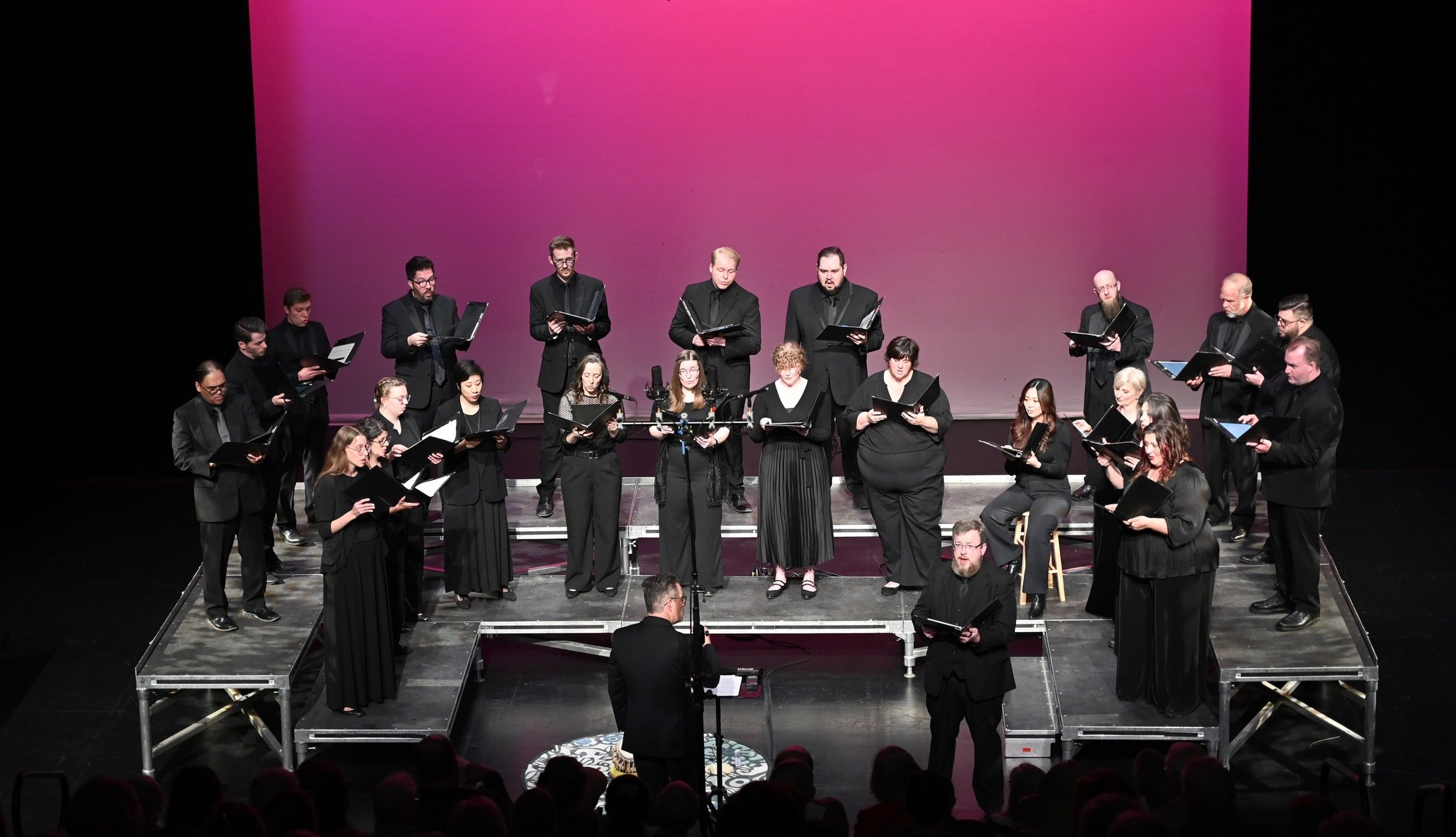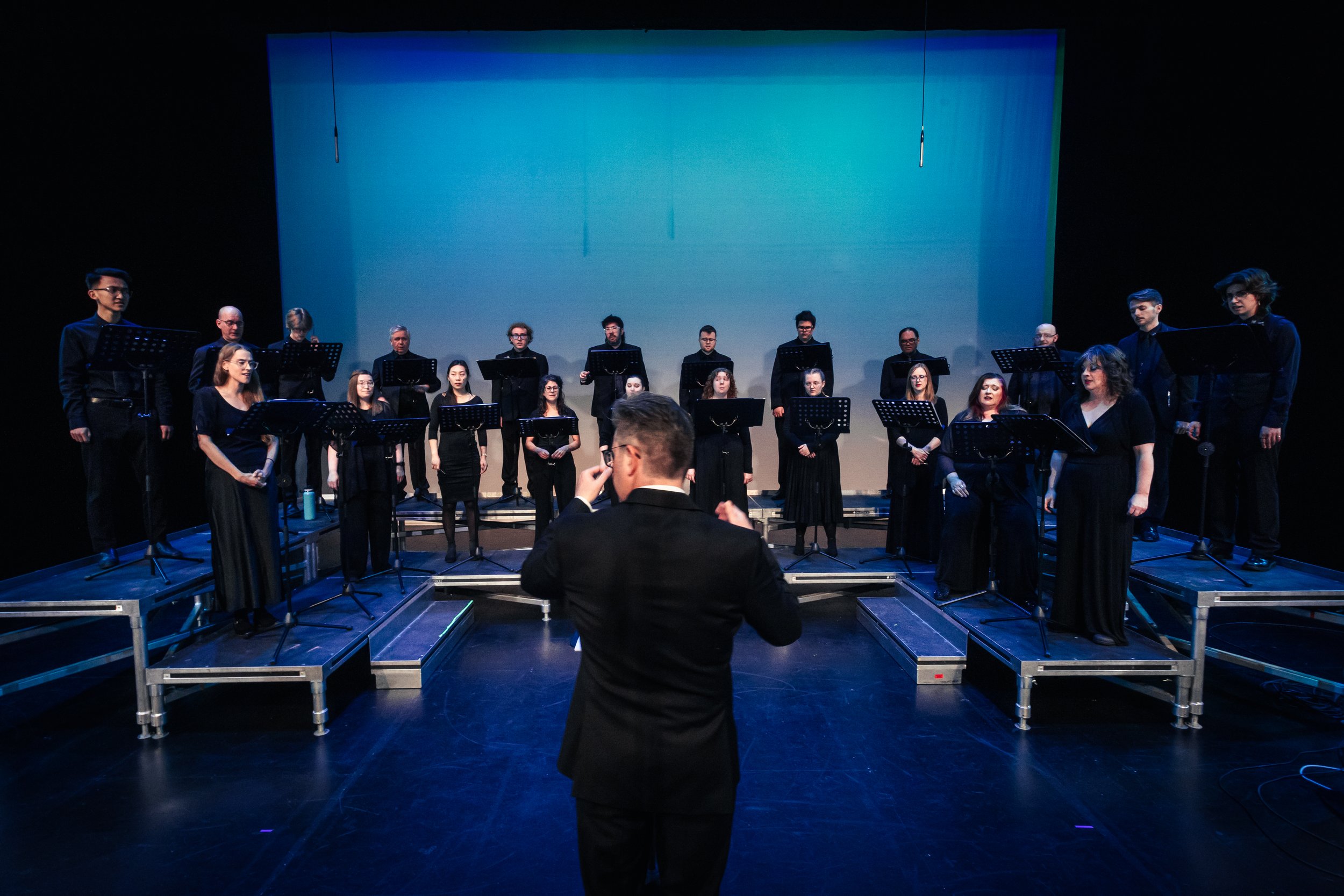

Plan Your concert Experience
-
When selecting a concert venue, ease of access for our audiences is top of mind, so we generally perform in spaces with ample parking nearby and nearby transit access. Venue-specific information for this season’s concert venues can be found here.
Prior to every concert, we will send an email to all ticket holders with specific directions to help you plan your transit or parking needs in advance!
-
We recommend arriving about 30 minutes prior to show time for a smooth experience getting through the front of house and seated before the concert begins. Don’t panic if you are running late—for most performances we can easily help you sneak in during applause.
If you are choosing to drive to our concerts, arriving early can be extra important for ensuring you can easily find parking and getting seated before the concert begins.
-
Whatever makes you feel comfortable and is appropriate for being in public! Some people like to dress up to attend a concert while others might prefer to attend in a t-shirt and jeans. A good rule of thumb is to dress the same way you would to go out to a sit-down restaurant.
-
Pro Coro Canada concerts typically run between 1.5 to 2 hours, often with an intermission. If there is no intermission, this is typically indicated on the ticket page and in the program.
Each concert varies in terms of how much talking there is between pieces, often depending on the atmosphere of the concert theme. New Year’s Eve, for instance, is a much more celebratory and conversational concert than Good Friday.
-
Please hold your applause until the end of each piece of music. For pieces with multiple movements (which will be indicated in your concert program), please wait until the end of the entire piece to applaud.
If you’re unsure, your safest bet is to wait for the applause to begin and then join in!
-
More information to help you plan your Pro Coro Canada concert experience can be found here.

What is a choir?
A choir is a group of singers who perform together, blending their voices to create a unified musical sound. For a professional choir, this goes beyond just singing; it involves rigorous training, exceptional vocal technique, and a deep commitment to artistic excellence. Each singer is a skilled musician, capable of intricate musicality and seamless vocal blending across a wide range of styles, from classical to contemporary.
The concept of choral singing has ancient roots, appearing in various forms across cultures, from the communal chants of early civilizations to the structured ensembles of ancient Greek drama and religious ceremonies. Choirs in the Western choral tradition are typically divided into voice sections—soprano, alto, tenor, and bass—allowing for rich harmonies and complex musical textures. There is frequently further splitting of these parts to allow for more complex harmony to form. With 24 professional singers, For Pro Coro Canada sometimes divides into 24 parts, having each artist perform their own part.
While the history of Western choral music is generally rooted in the Christian church, many choirs, including Pro Coro Canada, are not associated with the church, nor an academy institution, and sing both sacred and secular music.
Most choirs are community groups where singers either join for free or pay fees to participate in the group. There are some choirs, like Pro Coro Canada, that are professional ensembles where a curated selection of highly skilled singers are paid to perform as members of the choir.
Ultimately, professional choirs enrich communities by sharing the beauty and power of choral music. They offer audiences deeply moving experiences and often engage in educational outreach, inspiring new generations and fostering a greater appreciation for the arts. This dedication solidifies their vital role in the cultural landscape, showcasing the transformative impact of the human voice united in song.

-
Description text goes here
-
Description text goes here
-
Description text goes here










